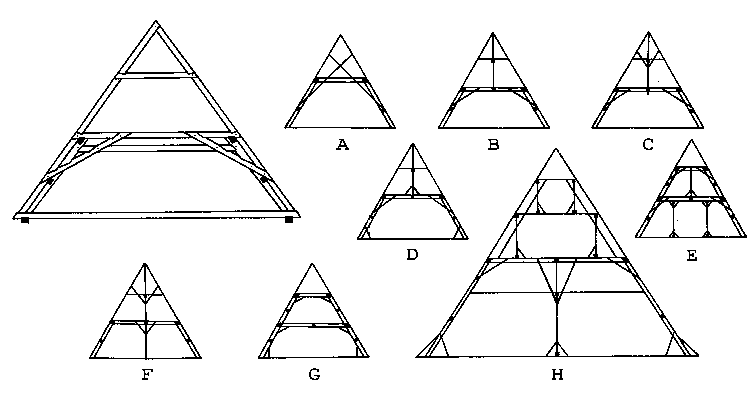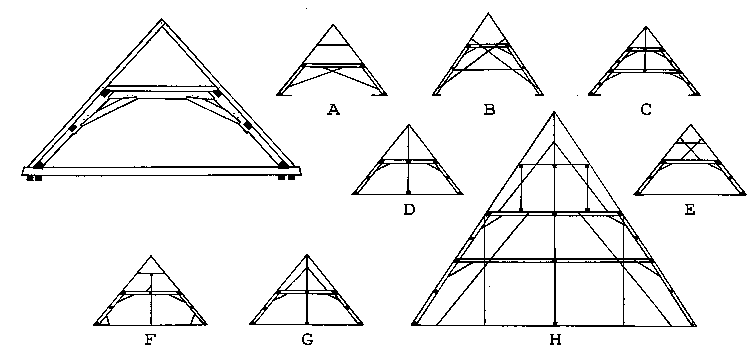Posted By: D L Bahler

Bauernhause Roof - 08/19/10 02:55 PM
First off, here is a picture

1, of a burned out old Bauernhaus
A Bauernhaus is a farmhouse, here it is specifically the main building on a Bernese farm, alongside the Stöckli and the Spycher. The Bernese Bauernhaus consists of living quarters at one end, a livestock barn on the other, and the Heustock, or hay floor, up above under the roof.
For this first post I will just ask a question, what can you determine about the roof framing from this picture? Remember the gable end is not the same.
I have my own conclusions, but I decided to start with a question to see what you can come up with, and maybe you all might notice something I missed.

another picture of the same type of roof.

1, of a burned out old Bauernhaus
A Bauernhaus is a farmhouse, here it is specifically the main building on a Bernese farm, alongside the Stöckli and the Spycher. The Bernese Bauernhaus consists of living quarters at one end, a livestock barn on the other, and the Heustock, or hay floor, up above under the roof.
For this first post I will just ask a question, what can you determine about the roof framing from this picture? Remember the gable end is not the same.
I have my own conclusions, but I decided to start with a question to see what you can come up with, and maybe you all might notice something I missed.

another picture of the same type of roof.








